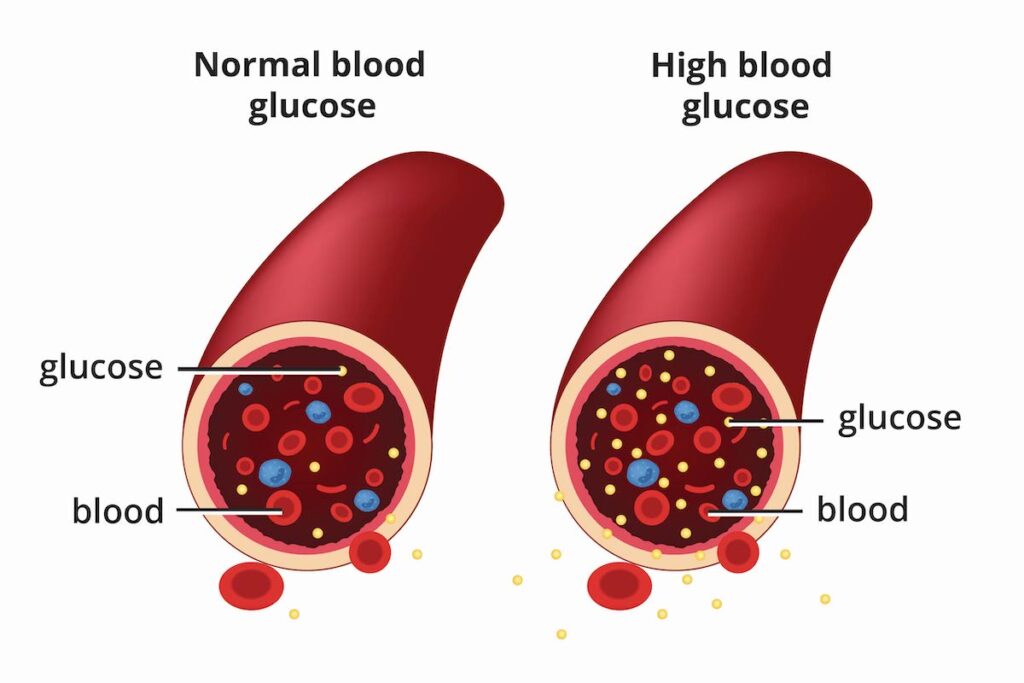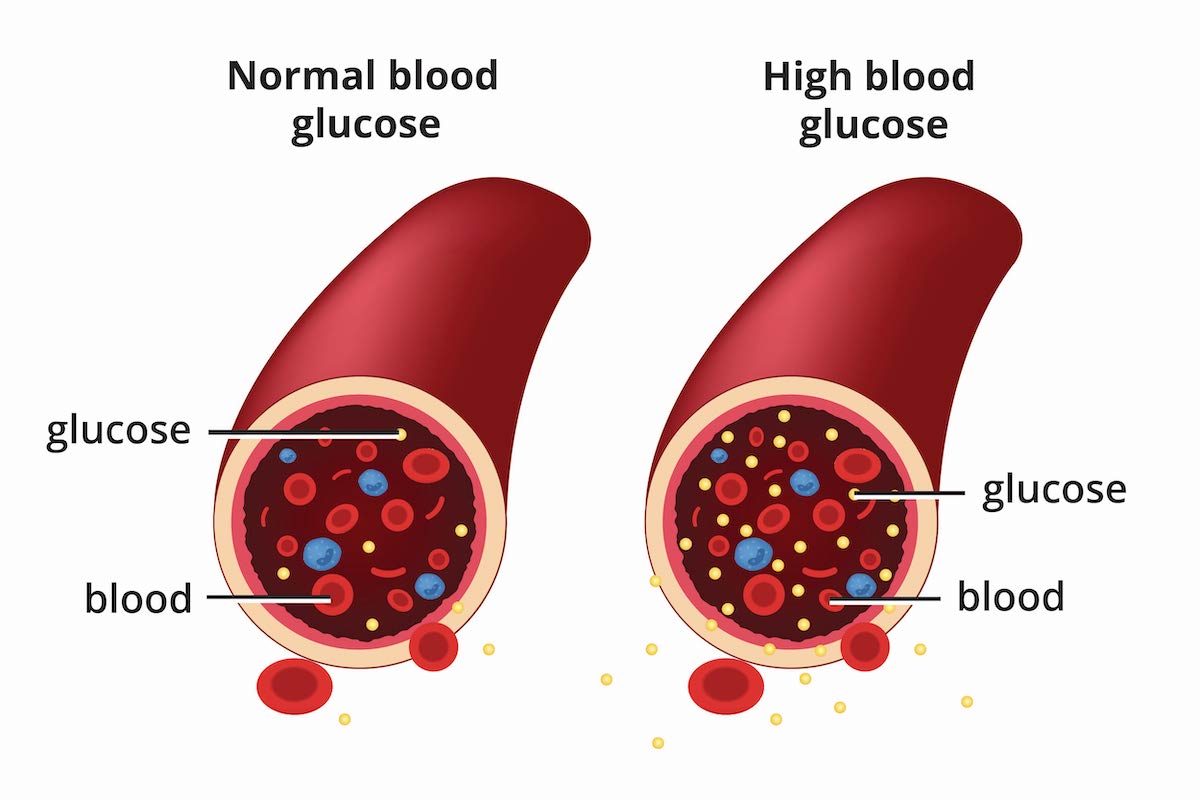
Does Splenda Raise Blood Glucose? Unpacking the Science and Real-World Effects
For individuals managing diabetes or simply mindful of their blood sugar levels, the impact of various foods and sweeteners on blood glucose is a constant consideration. Splenda, a popular artificial sweetener, often comes under scrutiny. The core question is: Does Splenda raise blood glucose? This article dives deep into the science, research, and real-world observations to provide a comprehensive understanding of Splenda’s effect on blood sugar.
What is Splenda and How is it Made?
Splenda is the brand name for sucralose, an artificial sweetener derived from sugar. The process involves replacing three hydroxyl groups on the sugar molecule with chlorine atoms. This modification makes sucralose about 600 times sweeter than sugar and, critically, prevents it from being metabolized by the body. This lack of metabolization is key to understanding its potential impact on blood glucose.
The Science Behind Sucralose and Blood Glucose
The primary reason sucralose is marketed as a zero-calorie sweetener is that it passes through the digestive system largely unchanged. Since it isn’t broken down and absorbed like regular sugar, it theoretically shouldn’t directly raise blood glucose levels. However, the human body is a complex system, and the effects of artificial sweeteners are not always straightforward. [See also: Understanding Artificial Sweeteners and Diabetes Management]
Direct Impact on Blood Glucose
Most studies indicate that sucralose, in isolation, has a minimal to no direct impact on blood glucose in healthy individuals. Because it is not metabolized, it does not contribute to the pool of glucose in the bloodstream. This is supported by numerous clinical trials where participants consumed sucralose without experiencing a significant increase in blood sugar. However, context is crucial. What else is being consumed alongside Splenda?
Indirect Effects and the Cephalic Phase Insulin Response
The body’s response to sweetness can be more nuanced. The cephalic phase insulin response (CPIR) is a physiological response where the body anticipates the arrival of glucose based on the taste of sweetness. Even without actual glucose entering the bloodstream, the brain can signal the pancreas to release insulin. Some research suggests that artificial sweeteners like sucralose could trigger a CPIR, potentially leading to a slight drop in blood glucose initially, followed by a rebound effect or altered glucose handling over time. The magnitude of this effect varies significantly among individuals.
Research and Studies on Splenda and Blood Sugar
The scientific literature on the effects of Splenda (sucralose) on blood glucose is varied, with some studies reporting no significant effect and others suggesting potential impacts, particularly in specific populations.
- Studies Showing No Significant Impact: Many studies involving healthy individuals have found that sucralose consumption does not lead to significant changes in blood glucose or insulin levels. These studies often form the basis for the claim that Splenda is a safe alternative for people with diabetes.
- Studies Suggesting Potential Impacts: Some research indicates that sucralose might affect glucose metabolism in individuals with obesity or pre-existing insulin resistance. These studies suggest that long-term consumption of sucralose could potentially alter gut microbiota, which in turn could influence glucose tolerance. [See also: The Gut Microbiome and Diabetes Risk]
- Impact on Individuals with Diabetes: The effects of Splenda on individuals with diabetes are a subject of ongoing research. While some studies show no adverse effects, others suggest that certain individuals may experience a slight increase in blood glucose levels or altered insulin sensitivity. The variability highlights the importance of individual monitoring and consultation with healthcare professionals.
The Role of Other Ingredients in Splenda Products
It’s essential to consider that Splenda is not always just sucralose. Many Splenda products contain other ingredients, such as dextrose or maltodextrin, which are carbohydrates that can raise blood glucose. These bulking agents are added to make the product easier to measure and use, particularly in baking. Therefore, it’s crucial to carefully read the ingredient list of any Splenda product to understand its complete composition and potential impact on blood sugar. The question of does Splenda raise blood glucose becomes more complex when these additional ingredients are factored in.
Real-World Observations and Anecdotal Evidence
Beyond scientific studies, many individuals with diabetes or those monitoring their blood sugar levels share their experiences with Splenda. Some report no noticeable changes in their blood glucose after consuming Splenda, while others observe a slight increase or fluctuation. These anecdotal observations underscore the importance of individual responses and the need for personalized monitoring. Keeping a food diary and regularly checking blood glucose levels after consuming Splenda can help individuals determine its specific impact on their bodies. [See also: Effective Blood Sugar Monitoring Techniques]
Factors Influencing the Impact of Splenda on Blood Glucose
Several factors can influence how Splenda affects blood glucose levels:
- Individual Metabolism: Metabolic rates and insulin sensitivity vary significantly among individuals. What might not affect one person’s blood sugar could have a noticeable impact on another.
- Overall Diet: The overall composition of the diet, including the intake of carbohydrates, fats, and proteins, can influence how the body responds to Splenda. Consuming Splenda as part of a high-carbohydrate meal might lead to different results than consuming it with a low-carbohydrate meal.
- Gut Microbiome: As mentioned earlier, the gut microbiome plays a crucial role in glucose metabolism. Changes in the gut microbiota composition can affect how the body processes sugars and artificial sweeteners.
- Dosage: The amount of Splenda consumed can also influence its impact. While small amounts might have minimal effects, larger doses could potentially trigger a more noticeable response.
- Form of Splenda: As previously discussed, the form of Splenda (e.g., pure sucralose vs. Splenda packets containing dextrose) is critical.
Practical Recommendations for Individuals Monitoring Blood Glucose
For individuals concerned about the potential impact of Splenda on their blood glucose levels, here are some practical recommendations:
- Read Labels Carefully: Always check the ingredient list of Splenda products to identify any added carbohydrates or other ingredients that could affect blood sugar.
- Monitor Blood Glucose Levels: Regularly monitor blood glucose levels before and after consuming Splenda to assess its specific impact on your body.
- Keep a Food Diary: Maintain a detailed food diary to track your intake of Splenda and other foods, along with corresponding blood glucose readings. This can help identify any patterns or correlations.
- Consult with a Healthcare Professional: Discuss your concerns with a doctor, registered dietitian, or certified diabetes educator. They can provide personalized guidance based on your individual health status and needs.
- Consider Alternatives: Explore alternative sweeteners with different metabolic profiles. Some options include stevia, erythritol, and monk fruit, which may have less impact on blood glucose for certain individuals. [See also: A Guide to Natural and Artificial Sweeteners]
- Use in Moderation: Even if Splenda appears to have minimal impact on your blood glucose, it’s generally advisable to use it in moderation as part of a balanced diet.
Conclusion: Does Splenda Raise Blood Glucose? A Nuanced Answer
So, does Splenda raise blood glucose? The answer is nuanced. While pure sucralose is unlikely to directly raise blood glucose levels in most healthy individuals, the overall impact can be influenced by various factors, including individual metabolism, gut health, the presence of other ingredients in Splenda products, and the overall dietary context. Careful monitoring, label reading, and consultation with healthcare professionals are essential for making informed decisions about Splenda consumption, especially for those managing diabetes or monitoring their blood sugar. Understanding the science and paying attention to individual responses are key to navigating the complexities of artificial sweeteners and their effects on blood glucose control. Ultimately, the best approach is a personalized one, tailored to individual needs and health goals. Continued research is vital to further elucidate the long-term effects of sucralose and other artificial sweeteners on glucose metabolism and overall health. The question of does Splenda raise blood glucose remains a topic of ongoing investigation, and staying informed is crucial for making healthy choices.

